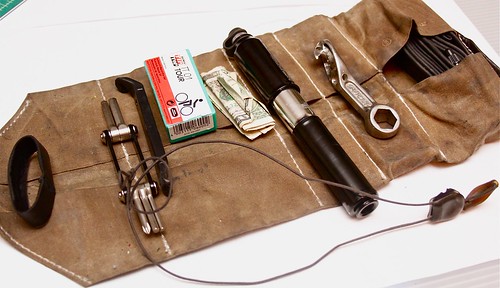I believe that a person cannot know himself without first understanding his limitations. I’m not good at pure mathematics, and as a consequence I have only a tenuous grasp of physics properties such as wave behaviour or quantum mechanics (I’m better at Newtonian physics, metallurgy, and manufacturing processes). My omelets are mediocre (but cheese solves many problems). I’m rubbish at giving or following driving directions. I am however, better than most people at bike mechanics. And when I say better than most people, that’s me being modest. So when I talk about how useful a bike tool is, rest assured that there is a certain weight behind my statements. And something that I can state is that the more features a tool has, the less useful it becomes. I call it the Multi-tool Paradox. In short, as a tool is heaped with more and more features, it quickly becomes so ungainly that it becomes inefficient to use for any purpose. This phenomenon is something that the typical cyclist often doesn’t see.
The concept of the multi-tool is nothing new, but in the late 1980s they really rode the coattails of the mountain bike boom to popularity. The real reason that mountain bikes became so popular was that the industry was selling a lifestyle not sports equipment. Mountain bikes’ image broke free of the stodgy, tradition-laden roadie scene. It was California hippies enjoying the outdoors, bros getting dirty and drinking beer. Grassroots inventors making new stuff in their garage. People grew dreads and wore dead fish corpses as jewelry. Mountain bikers were rugged individuals who were adventurous and self-sufficient. They of course needed portable tools so that they could be prepared for anything in the field. And the more features in the tool, surely the more prepared the individual would be. Folding set of Allen keys? What are you, a total noob?! My tool has 39 features including a bottle opener!
(Sidenote: Oh please god/yahweh/buddha…please, please, please let there be more bottle openers integrated into bike tools/frames/components. There is a distinct lack of options. And I would simply LOVE to write about innovations in bottle openers)
Just because you have 3 dozen features incorporated into your multi-tool doesn’t mean that you have the knowledge or experience to use them. In fact, unless you have the advanced skills, you’ll find that using a small hedgehog of metal tool fittings will impede the repairs you are capable of doing.
Oh wait, you say you’re an expert at home mechanics and DIY bike maintenance? Now I’m really worried. Few things wind me up as much as when a rider comes into my shop, drills me with questions about what’s wrong with their bike, declines to hire me to fix it, and then proceeds to whip out a multi-tool. I’d rather watch parents beat their children, because kids heal up for the most part, except perhaps the mental scars….and there’s a multi-billion dollar pharmaceutical industry catering to that. Crimes against bicycles are etched in paint and gouged metal. The absolute worst is watching someone try to true his wheel with a crap multi-tool and no truing stand. They look at me in pride, hoping that I’ll be impressed. I’m looking at them like they just performed self-circumcision with an old Swiss Army knife. Horrifying.
I’m a professional mechanic. In the shop, I almost never use a tool with more than 3 features. There are three reasons for this: speed, leverage, and potential damage to the bike fittings. In the shop environment, tools get much more use than in the hands of consumers. They tend to be heavier for durability and leverage, single purpose for speed and ergonomics. High-quality tools are less likely to strip or round out fittings. The moment I think a spoke wrench is a little worn, I throw it out. It is not worth the risk of rounding nipples on thousand dollar wheelsets. Same thing with chain tools in an era of $100 11sp chains. You can do a lot of damage with a bad tool.
Here’s my advice. Keep it simple. Never buy a multi-tool with more than 6-8 features (although I have seen a couple Lezyne tools with 10 features that didn’t seem too awkward). Instead buy multiple tools and keep them in a tool roll . Choose your multi-tools carefully. Don’t buy one that has a lot of features that you don’t need. For example, older road bikes have almost no Torx head fittings. Be aware of how much leverage you’ll need for the components on your bike. For example, a modern, high-end carbon road bike has very few bolts that require that much force, so even a diminutive tool would suffice. An older bike with a quill stem will need a heftier tool to get enough leverage. If you often make adjustments to your bike, perhaps a loose 4mm and 5mm Allens with a Bondhus heads on one end would be a good idea. I can’t recommend any tool with integrated tyre levers. Tyre levers all eventually break if you use them often enough, or at least the plastic ones do (and unless you’ve got extra gnar gnar downhill tyres, you should only be using plastic tyre levers). The best tyre levers on the market are the Soma Steel Core Levers.
A multi-tool with too many features is not a sign that you are prepared. Rather it is a dead giveaway that you don’t know what it takes to repair your bicycle in the field, and that you thought a $40 gadget would be an acceptable substitute to learning. I weep for your bicycle.
…We're riding townies, adventure, and mountain bikes. Find recommendations on our store page. As Amazon Associates we earn from qualifying purchases.
